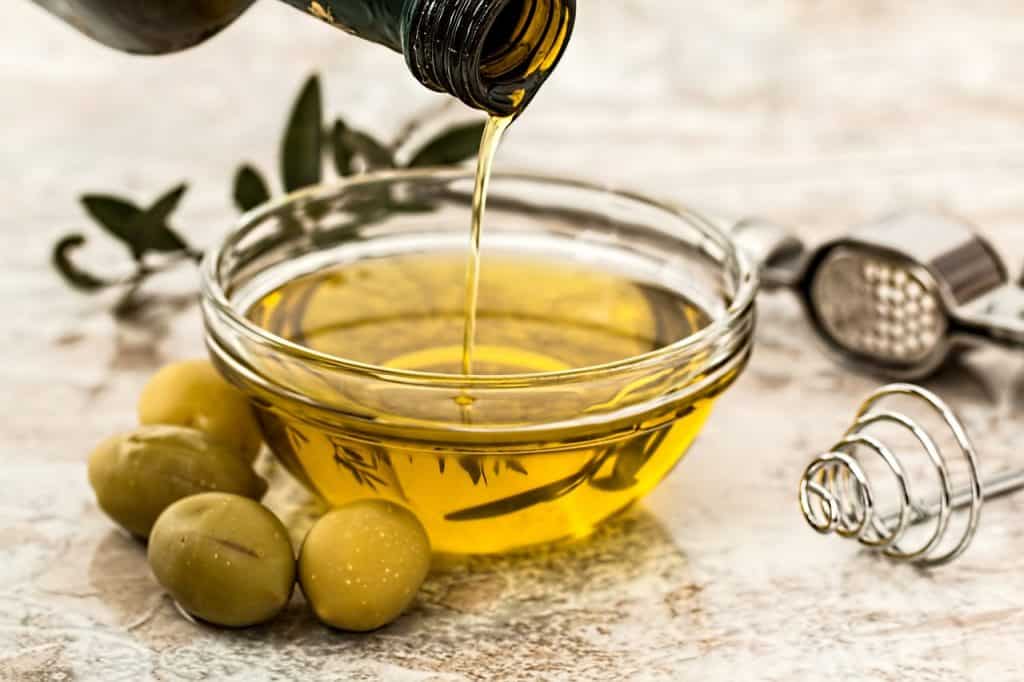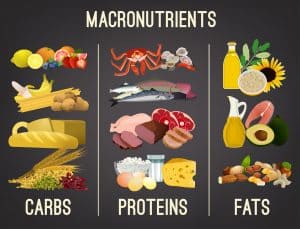A few years ago, I became determined to take my fat loss journey to the next level and improve my health. I was already exercising —but, I needed to concentrate harder on my diet.
So, I started to research. Two eating regimes consistently reared their heads—paleo and keto. I realized that for the best results, I needed to grasp the difference between these two programs.
Yet, online information was lacking.
Hence, to ensure you don’t suffer the same headache—I’ve compiled the ultimate paleo vs. keto 101.
- Table of Contents
What Is the Keto Diet?

Despite the ketogenic (keto) diet being a currently on-trend eating regime, its history dates back to the early 20th century.
Created in the 1920s as a non-medicinal treatment for childhood epilepsy—keto proved extremely successful. In some cases, where pharmaceutical treatment isn’t appropriate or possible, it’s still used for that purpose today.
Essentially, it’s one of the easiest diets to understand.
It involves severely limiting (or dropping entirely) carbohydrate intake and consuming mainly protein and healthy fats instead.
That’s it.
Here’s the simple science.
Your body is a machine that requires energy to function. In normal circumstances, the body utilizes carbohydrates to power you through work, exercise, and normal physiological functions.
But, if carbs are dropped from the menu (as in the keto diet)—the body switches on its “starvation” mode. It needs to survive and hence looks elsewhere for its fuel.
In this circumstance, stored fat is converted by the liver into both fatty acids and ketones. These ketones force the body to employ the fatty acids as its primary energy source.
When this occurs, the body is said to be in a state of ketosis.
Depending on your physiology and how drastically you reduce your carb intake—entering ketosis takes between 2-4 days. However, if you have a “cheat” day and knock back some high carb foods like bread or pasta—your ketosis ceases.
Meaning, you have to go through the whole process again.
Normally, a typically balanced non-keto diet follows the following macronutrient plan, as outlined by the IOM (Institute of Medicine).
Institute of Medicine Daily recommended macro percentage of caloric intake
Carbohydrates
40 - 65%
Protein
10 - 35%
Fat
20 - 35%
If you are in the process of building or maintaining muscles:
Muscle Building/maintenance Daily recommended macro percentage of caloric intake
Carbohydrates
35 - 40%
Protein
35 - 40%
Fat
20 - 30%
However, when following keto, this is turned on its head and looks similar to this:
Ketogenic Diet Daily recommended macro percentage of caloric intake
Carbohydrates
5 - 10%
Protein
30 - 35%
Fat
55 - 60%
In simple terms, carb intake is reduced, and fat intake increased.
On paper, any food is acceptable on keto as long as it contains minimal carbs. Typical fares consumed on this plan are:
- Avocados.
- Cheese.
- Meat.
- Coconut oil.
- Low-carbohydrate vegetables.
- Eggs.
- Seafood.
- Plain yogurt.
Here’s the key:
In the keto diet, fat is used as fuel—hence, depleting your body’s stores. Theoretically, leading to weight loss.
And, that’s the primary aim behind the keto diet. A fat-busting regime.
What Is the Paleo Diet?

If you considered that the keto diet was old dating back to the 1920s—the Paleolithic (Paleo) diet takes it to the absolute max.
Sometimes known as the “caveman” or “hunter-gatherer” diet—this plan aims to include only foods that were available (and actually eaten) during the late Paleolithic period. That is, around 10,000 years ago.
Naturally, even with today’s scientific advances, it’s impossible to know exactly what staples were consumed during that era. However, we can make certain educated assumptions.
The main premise is that our ancestors ate whole foods. That is, those which are not, or are at least minimally, refined, and processed before consumption. Hence, microwavable TV dinners aren’t included.
Eating foods that are unadulterated before consumption are generally considered higher in nutrients and provide greater health benefits than their manufactured cousins.
Additionally, proponents of the paleo diet consider it to be more “body-natural”. That is, our digestive systems evolved to eat whole foods that existed in the Paleolithic period—they’re not designed to cope with additives, flavorings, colorings, and preservatives.
As this regime concentrates on foods rather than macronutrients—there are no specific macro plans to follow. Typical staples consumed on paleo include:
- Fruit.
- Meat.
- Vegetables (not including grains).
- Eggs.
- Fish.
- Nuts.
- Healthy fats (coconut oil, avocado, olive oil, lard).
- Natural sweeteners (honey, stevia, maple syrup).
There is some evidence that following paleo is a healthier option than the “typical” Western diet and can promote weight loss.
What Do the Paleo and Keto Diets Have in Common?

Historically, they appear at opposite ends of the spectrum. One originated as a treatment for epilepsy, the other the favored menu of stone-age men and women.
However, when comparing paleo vs. keto, it seems they share much common ground.
1. Both Diets Promote Eating Healthy Fats
In keto, this is no surprise since the diet utilizes fat as the fuel behind day-to-day living.
Where paleo is concerned, the diet appreciates that fats are required for overall well-being—as long as these fats existed 10,000 years ago and are unrefined.
Get this.
In the 1990s, mountain climbers discovered the mummified remains of an ice-person dating back 5,300 years. In truth, not quite the Paleolithic period. But in an age that lasted 2.6 million years in total—it’s pretty darn close.
When scientists conducted an autopsy on this body, they found that its stomach still contained its last meal. Which, upon examination, was found to be high in fat content. Illustrating that even thousands of years ago—just like today—ancient men and women loved their fatty foods.
When comparing paleo vs. keto—it’s important to recognize that both meal plans agree that only healthy fats are allowed.
Processed vegetable oils (such as cottonseed and sunflower) and those which are hydrogenated (in fast food and margarine) are a definite no-no. These are trans-fats which research has shown to promote obesity, heart disease, and prevent the uptake of “good” fats.
Instead, healthy unsaturated fats found in avocados, fish, olives, and nuts are favored.
2. Paleo and Keto Both Avoid Grains
When we look at the paleo vs. keto approach to grains, the opinion is the same—completely avoid.
Yet, this is for two completely different reasons.
Paleo is concerned mostly with the negative health aspects that grains can promote. Mainly because:
- Grains contain gluten—which causes intestinal inflammation and irritation.
- The antinutrient (phytate) content is high—which can prevent the absorption of minerals and vitamins.
- Grains are rich in lectin—known to cause auto-immune disease and arthritis.
Furthermore, traditionally, paleo-enthusiasts often argue that our forebears didn’t consume grains. So, they shouldn’t form part of the paleo diet.
However, evidence is now emerging that this belief is untrue—our ancestors used starchy grains as part of their day-to-day nourishment.
Keto isn’t much concerned with the health benefits or ancient traditions. Instead, it focuses on the fact that grains (whether whole or made into bread and pasta) are high in carbohydrates.
Therefore, able to throw the body out of ketosis and preventing fat-burning.
3. Keto and Paleo Diets Agree on Additional Sugar
In this area, both diets concur—avoid added sugar. Yet, there’s a difference in strictness between the paleo vs. keto camps.
Keto is completely against any added sugar at all because it’s a carbohydrate. In fact, in this diet, it’s not just the extraneous kind—but any foods high in this compound at all. Hence, even most fruits (which are high in fructose) are excluded.
The only usual exceptions are some berries, which tend to be low in carbs yet high in fiber.
For paleo, the approach is a little more relaxed. Sugars are allowed; although regular store-bought white and brown sugar (made from cane and beet) are highly refined—and therefore definite no-go areas.
Natural sweeteners such as raw honey, maple syrup, and dried fruits are considered acceptable and can be included in your favorite dishes.
Where Do the Paleo and Keto Diets Differ?

Despite sharing some common aspects—there’s much to separate paleo vs. keto.
Ideology
Primarily, the basis behind keto is efficient weight loss. A way to drop the pounds by utilizing inherent physiological chemistry—while still following a food regime that’s pleasurable to eat.
While some followers may consider it a “healthy” choice—the principle doesn’t extend much further than that.
The paleo diet, for many (although not all) devotees, is about lifestyle and world-view as much as health.
It’s not simply a matter of eating organically. It also carries with it the additional concerns of natural food production and what many believe to be a capitalist driven food industry.
The accuracy of the latter is a matter of debate—but illustrates the difference between the two programs.
Macronutrients
While there are many “suggested” macro profiles for the paleo diet online—in real terms, it’s of little concern. You can split your macros into whatever proportions you wish, as long as the food sources are paleo-friendly.
For keto—macros are the overriding factor. You must reduce carbs dramatically or eliminate to instigate ketosis and replace it with fats and proteins.
Carbohydrates
As we’ve seen in this paleo vs. keto article—both diets eliminate the carb-rich grains.
However, while the paleo diet is sometimes referred to as low-carb—this isn’t an overriding requirement.
Paleo allows for whole carbs. So, foods rich in this macro are permitted which are forbidden on the keto diet. Including staples such as fruit, vegetables, and natural raw sweeteners.
Dairy Foods
One of the biggest differences between paleo vs. keto is the attitude towards dairy products.
Within keto, consumption is actively encouraged—within reason.
Due to their naturally high fat and low carb content—butter, hard cheeses, and whipping cream are solid choices for keto. However, avoid dairy staples such as ice cream and milk, they’re high in lactose—a carbohydrate.
Within paleo—dairy consumption is severely frowned upon. This is due to both physiological and historical motives.
Many paleo-gurus believe that our ancient hunter-gatherer relatives didn’t milk cows—and so shouldn’t be included in the diet. However, recent evidence illustrates this may not be accurate—with our distant relations actively milking cattle around 7,500 years ago.
Physiologically, the reasons are more compelling. Around 65 percent of the world’s population is lactose intolerant—which can lead to abdominal pain, diarrhea, and vomiting.
Which Diet Is Better for Weight Loss?

Many people initially choose to follow either a paleo or keto diet to drop the pounds.
The evidence indicates that both of these plans are effective.
Research shows that keto is a highly successful diet to lose weight fast. With many people losing 10 pounds or more in less than two weeks. However, as this diet promotes diuresis (increased urination), some weight reductions will be due to water elimination.
The same study also illustrated that due to the high protein content of the diet—muscle mass was retained.
The paleo diet also assists with pound-shedding. However, experts conclude this is mainly due to the program reducing overall calorie consumption.
If combined with an active lifestyle, both plans could prove to be equally effective.
Yet, it’s argued that keto may be more attractive for the serious dieter. This high fat and protein diet suppresses the appetite—reducing the chance of excess caloric intake.
Which Diet Gives the Worst Side Effects?

In some circumstances, the paleo vs. keto side effects are identical.
The keto diet is renowned for inducing low-carb or keto-flu. An experience which is sometimes replicated in the paleo diet, where the absence of grains and refined sugars can result in carb levels dropping.
Symptoms can include:
- Constipation
- Halitosis.
- Headaches and migraines.
- Diarrhea.
- Lethargy and a feeling of weakness in the muscles.
- Rash.
- Muscle cramps and stiffness.
It’s believed that the absence of carbs in these diets lowers insulin levels. This results in minerals and electrolytes such as sodium and potassium being expelled from the body—leading to the above side effects.
Typically in both paleo and keto—this is experienced within the first few days of the diet and quickly subsides when glucose stabilizes around the fourth day.
With keto, it’s often a matter of just sticking out the keto-flu until the body adjusts to the lack of carbs. However, as whole carbs are still permitted in paleo, flu can be avoided by ingesting sugars and high-carb vegetables.
One further issue in paleo is insufficient calcium intake—especially if dairy foods are omitted entirely from the diet. This can lead to:
These problems are preventable by consuming calcium-rich paleo-friendly foods such as cheese, or through using supplementation.
Which Is the Healthier Option?

Putting paleo vs. keto side-by-side—there’s intrinsically no outright winner in the “healthy” stakes.
Research has shown that the keto diet is beneficial since it can:
- Lower bodily fat content.
- Inhibit hunger.
- Improve mood.
- Reduce triglycerides—a cause of heart disease.
- Elevate HDL (“good”) cholesterol.
- Lower insulin levels—beneficial for diabetics.
- Reduce blood pressure.
Additionally, the paleo diet promotes:
- Weight loss.
- Lowered triglycerides.
- Improved blood pressure.
- Reduced blood sugar levels.
- Enhanced mood.
However, while both are beneficial for health—the issue arises around practicality.
From a nutritional point of view, the keto diet requires some serious planning. And, it’s not just about ensuring that you’re dropping the carbs and upping the protein and fat.
The micronutrients—vitamins and minerals—are affected by keto. Omitting an entire food group from your diet reduces the intake of these nutrients.
Furthermore, ketosis leads to elevated urination, which expels essential minerals such as potassium and magnesium from the body.
Remaining completely healthy on the keto diet demands watching your micronutrient intake as well as your macro—adapting foods where necessary or using additional supplementation.
There’s also the weight loss factor.
One small slip with a pizza or pasta dish—and your body is out of ketosis. Meaning you have to go through the whole four-day process once again. Any health benefits from dropping the pounds are going to be delayed or lost.
Constantly “eating keto” is tough enough at home. But go on vacation or a business trip, attend a party, or just pop out for dinner one evening—avoiding carbs is seriously hard.
Paleo is relatively more forgiving across the board.
Admittedly, there are many items you cannot eat (dairy, refined sugars, etc.). But, this diet still enables you to consume many foods in the three major food groups. Hence, allowing you to hit micronutrient targets fairly easy.
Furthermore, your food “choices” when away from your kitchen are wider than on the keto. Meaning, you’re more likely to stick to your diet and gain the full health benefits.
Paleo vs. Keto: Summary
I’m often asked what appears to be the ultimate question—what’s the best diet?
In fact, the answer is quite simple.
The most effective and beneficial diet is one that you can stick to—every day.
That’s why in this paleo vs. keto article—there’s no “winner”. Both of these diets are proven to be potent weight loss tools, provide numerous health benefits, and are very similar in their negative side effects.
The difference arises in what fits around your lifestyle, aims, budget, and ethos.
If you’re no stranger to meal planning, enjoy calculating macro and micronutrients, want to drop weight fast, and enjoy high-fat foods—then keto could be ideal.
Conversely, if you love getting back to nature, enjoy fruit and vegetables, demand a wide range of food choices, and enjoy sticking-it-to-the-man—then paleo may be the sensible choice.
Remember, dieting isn’t about punishing yourself—that’s a remnant of the fads from the 1970s and 80s.
Food deserves to be enjoyed. Select the diet that will give you daily pleasure when consumed. In doing so, you’ll stay with the program—and gain the immense benefits of both looking and feeling amazing.













